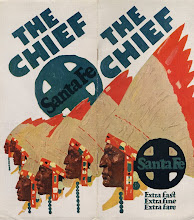
Since October 7th, the Wolfsonian-FIU has been hosting David Raizman, Professor of Art and Art History at Drexel University, as a research fellow. Professor Raizman has been looking through our extensive holdings of mid- to late nineteenth century World’s Fair materials for works related to his own area of interest and expertise: the representation and display of Renaissance and revival-style furniture in international expositions. Professor Raizman is particularly interested in some of the large and elaborately-carved and decorated pieces that were designed as much for public display as for private consumption, and which blurred the distinctions usually drawn between fine and decorative art objects, and gave luster to the notion of 'art applied to industry.'
The Wolfsonian library’s rich collection of original catalogs, guidebooks, official reports, and ephemeral items published by and for these international exhibitions is keeping him busy during the last two remaining weeks of his research visit. According to our scholar, “Every day brings new discoveries and greater familiarity with these events that attracted millions of visitors (and generated reams of printed paper!)" He adds that "It's interesting to read the jurors' reports along with the comments of critics and observers who wrote about the world's fairs - there's such a variety of viewpoints, praising the highest levels of skill, marveling at the technology which assisted the worker, while at the same time lamenting the absence of 'ordinary' furniture that the majority of visitors might actually buy and enjoy. Reconciling these often conflicting attitudes seemed to have occupied many observers at the time and contributes to our understanding of the history of design in the later 19th century."
The Wolfsonian library’s rich collection of original catalogs, guidebooks, official reports, and ephemeral items published by and for these international exhibitions is keeping him busy during the last two remaining weeks of his research visit. According to our scholar, “Every day brings new discoveries and greater familiarity with these events that attracted millions of visitors (and generated reams of printed paper!)" He adds that "It's interesting to read the jurors' reports along with the comments of critics and observers who wrote about the world's fairs - there's such a variety of viewpoints, praising the highest levels of skill, marveling at the technology which assisted the worker, while at the same time lamenting the absence of 'ordinary' furniture that the majority of visitors might actually buy and enjoy. Reconciling these often conflicting attitudes seemed to have occupied many observers at the time and contributes to our understanding of the history of design in the later 19th century."

No comments:
Post a Comment